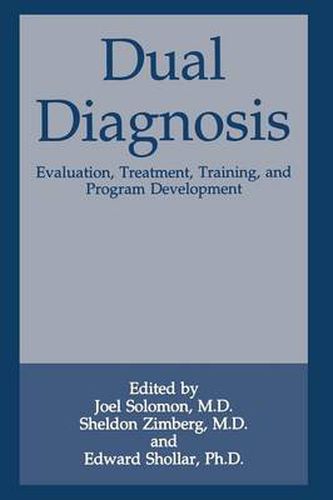Readings Newsletter
Become a Readings Member to make your shopping experience even easier.
Sign in or sign up for free!
You’re not far away from qualifying for FREE standard shipping within Australia
You’ve qualified for FREE standard shipping within Australia
The cart is loading…






This title is printed to order. This book may have been self-published. If so, we cannot guarantee the quality of the content. In the main most books will have gone through the editing process however some may not. We therefore suggest that you be aware of this before ordering this book. If in doubt check either the author or publisher’s details as we are unable to accept any returns unless they are faulty. Please contact us if you have any questions.
Patients who have both a psychiatric disorder and a substance abuse problem cause most clinicians to throw up their hands in despair. The clinical problems that these dual diagnosis patients present are enor mously complex. Diagnostically, how is one to tell if disorders of mood and thinking, for instance, are signs of a mental illness or consequences of substance abuse? How is one to obtain important historic information when the patient may be unable or unwilling to provide it and there are no readily available collateral sources of information? In any case, why bother? Treatments for dually diagnosed patients are ineffective; patients won’t stay in treatment; recidivism occurs at a very high rate. To make matters even more difficult, traditional health care reim bursement mechanisms do not provide for the multimodality clinical programs and special services needed by the patient who is both mentally ill and a substance abuser. So the clinician needs an effective bureaucratic strategy as well as a treatment strategy. For the most part, clinicians have handled the problem by ignoring it.
$9.00 standard shipping within Australia
FREE standard shipping within Australia for orders over $100.00
Express & International shipping calculated at checkout
This title is printed to order. This book may have been self-published. If so, we cannot guarantee the quality of the content. In the main most books will have gone through the editing process however some may not. We therefore suggest that you be aware of this before ordering this book. If in doubt check either the author or publisher’s details as we are unable to accept any returns unless they are faulty. Please contact us if you have any questions.
Patients who have both a psychiatric disorder and a substance abuse problem cause most clinicians to throw up their hands in despair. The clinical problems that these dual diagnosis patients present are enor mously complex. Diagnostically, how is one to tell if disorders of mood and thinking, for instance, are signs of a mental illness or consequences of substance abuse? How is one to obtain important historic information when the patient may be unable or unwilling to provide it and there are no readily available collateral sources of information? In any case, why bother? Treatments for dually diagnosed patients are ineffective; patients won’t stay in treatment; recidivism occurs at a very high rate. To make matters even more difficult, traditional health care reim bursement mechanisms do not provide for the multimodality clinical programs and special services needed by the patient who is both mentally ill and a substance abuser. So the clinician needs an effective bureaucratic strategy as well as a treatment strategy. For the most part, clinicians have handled the problem by ignoring it.